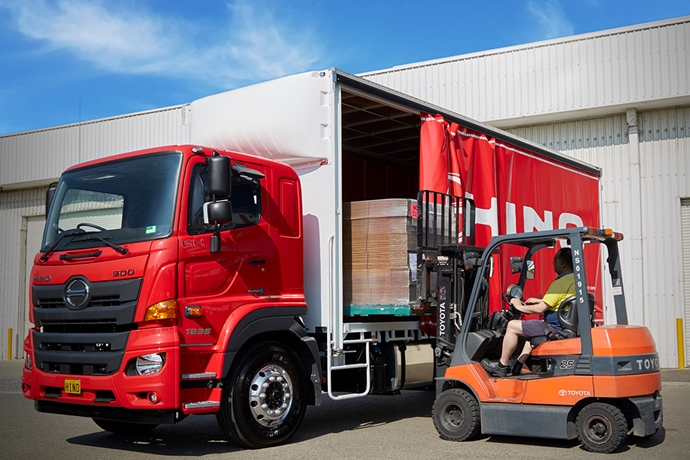
Its apparent COVID-19 has fundamentally changed the way we live and work. It’s introduced an element we’ve not experienced together as a country for almost 100 years: uncertainty. Where we could once plan years in advance, we now take it months at a time, always with a back-up plan should things need to change quickly.
Every industry across Australia has been impacted by COVID-19 in one way or another. However, the transport and logistics industry has been able to weather the storm better than most and seems to be one of the few industries bouncing back, while growing at the same time.
The shifting trend in online shopping has played a huge part in this.
The Changing Face of Shopping
COVID-19 has changed consumers buying behaviour including how consumers shop. The transition from in store shopping to ecommerce has been dramatic, going from ‘convenience’ to ‘necessity’ almost overnight.
According to Australia Post, April 2020 saw an 80% increase in parcel volumes compared to the previous year, as a result of more and more people ordering online. In the latest Australia Post report, it’s stated over 5.6 million households have purchased online in July 2021, up 4.9% from June 2021. Resulting in a 26.9% YOY growth for a 12-month period up to July 31, 2021.
A report by KPMG – Australian Retail Outlook 2021 – has uncovered that 42.18% of businesses found their e-commerce revenue increased significantly over 12-months. One of the biggest changes came from retailers.
A prime example of this is SOFI Spritz, Australia’s largest independent pre-batch cocktail business. Serving up over two million cocktails in 2019, they were hit hard in 2020 with the closure of pubs, and the aviation industry, losing out on a massive contract with Virgin. Yet their online sales exploded in the first six weeks of the 2020 pandemic, up more than 300% on the previous year, as Aussies tried to recreate cocktail hour at home.
While the numbers for smaller retailers are impressive, it’s the larger retailers - like Coles and Woolworths – that are driving the demand for more drivers and facilities due to their e-commerce growth.
In April 2021, Wooworths saw a 64.2% increase in online sales to $1.34bn. Woolworths CEO Brad Banducci believes the trend in online ordering will continue to grow, which has resulted in the company investing heavily in creating new fulfilment centres to meet demand. Woolworths has announced its plans to build a new centre in Auburn, Sydney, which will be operational by 2024 and expected to fulfil 50,000 orders a week.
Coles has noted similar trends in its online sales noting that total e-commerce grew by 48% (with B2C e-commerce sales growing by 64%), with strong growth in Victoria across Click & Collect and home delivery.
With more and more people ordering online, and businesses shipping in greater quantities, they’re going to need greater transport resources to keep up with demand.
Greater Reliance on Transport
With more people ordering online, whether it be for groceries, food deliveries or other items, the transport industry is being relied upon heavily to keep the economy moving.
During the first lockdown in 2020, when international borders shutdown, and domestic borders followed soon after, almost all industries came to a grinding halt. Events were cancelled, restaurants were shutdown, tourism was non-existent, and any industry not deemed ‘essential’ ceased to operate. Including the transport industry.
But as shelves began to empty, and shipments became delayed at customs, it became evident that transport and freight across the country was an essential service.
It hasn’t been an easy road for those in the transport and logistics industry. With an exponential increase in parcel movement, it has become a masterful juggling act. Also, the world of trucking has changed dramatically, now incorporating strict health and sanitation processes as part of their everyday operations.
As time goes on and COVID-19 becomes part of life, reliance upon online ordering and shipping will only strengthen the need for transport and logistics providers, and by extension, those who can drive the trucks delivering the goods.
In fact, it has been predicted the number of drivers will increase in the next five years.
According to the government’s Job Outlook site, there were an estimated 72,000 truck/delivery drivers in 2020, which is forecast to grow to 79,800 by 2025. However, this growth may be a bit on the conservative side if the shortage of truck drivers in Tasmania is anything to go by.
Tasmanian Transport Association executive director Michelle Harwood said her state alone could absorb another 100 truck drivers “at a minimum”. Given the size of Tasmania, that’s a lot of drivers. This is a promising sign for the industry, and those wanting more stability and a career change.
Moving Forward
With COVID-19 ever present in our lives for the moment, the future is a little unpredictable. However, the transport and logistic industry’s ability to remain agile throughout the height of the pandemic is a testament to its resilience.
While much of the country is going through another wave of lockdowns due to the highly contagious Delta Variant, and vaccinations being the key to getting society back to some form of normalcy, online shopping and deliveries do not look to be slowing down any time soon. Which translates to the continuing need for transport services.
For those within the transport and logistics industry, especially those behind the wheel, the country will continue to rely on them to keep things running.